Goat farming is a subcategory of animal husbandry that involves the care, feeding, and eventual breeding of domestic goats. Goats are raised for various products, including meat, milk, fiber, and skins. On low-quality grazing terrain, goat farming may be particularly well-suited for production with other types of livestock, such as sheep and cattle. Let’s check out tips to start a goat farming business below.
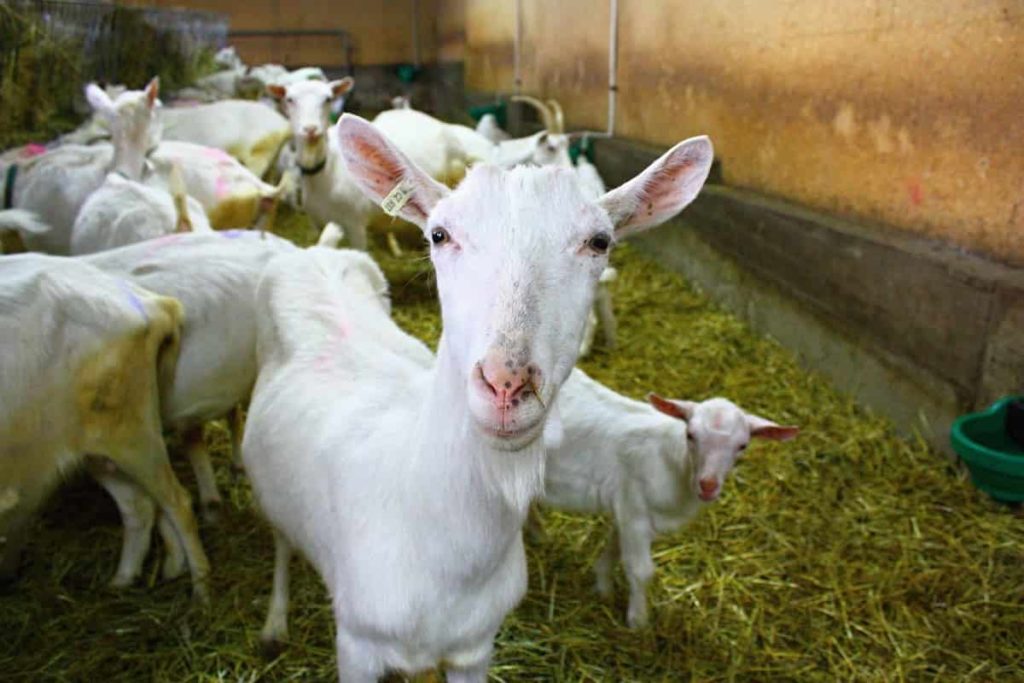
Unlike other animals, goats can effectively process low-quality pasture matter into high-quality lean meat. In addition, goats require little land or water for pasture, so even someone with a little plot of land can raise them. A goat farmer, like a farmer of any herbivore, has a limited capacity in terms of the number of goats they can successfully raise and maintain based on the quality of the pasture available to them.
On the other hand, goats may survive on extremely poor soil because they eat unappealing plants to most other domesticated cattle. Thus, in areas with scarce and poor-quality vegetation, goat herds continue to be an incredible resource. Approximately 75% of the world’s population regularly consumes goats. It accounts for 8% of red meat consumed globally and 5% of all meat consumed. There are comparatively fewer unhealthy fats or cholesterol in goat meat.
Therefore, a lot of people believe it’s a better option than other red meats when it comes to your health. According to some, the flavor of goat baby meat is comparable to that of spring lamb. The term “mutton” can refer to either goat or lamb in various regions (such as the Caribbean, Bangladesh, Pakistan, and India).
Tips to start a goat farming business: Top 40 basic goat farming tips
1. Preparation of shelter
For optimal goat husbandry, a firm needs access to sufficient space and shelter. The care and development of goats necessitate a separate shelter. To ensure that their goats have everything they need, farmers should construct multifunctional facilities or land. The shelter must be spotless and disease-free. The benefits of maintaining cleanliness, having a safe place to stay, and using a shelter for the foreseeable future, can be substantial.
2. Selection of the breed
Choosing a goat’s breed is important in starting a goat farming operation. The right male-to-female ratio can only be achieved by careful selection during the breeding phase of goat farming.
In case you missed it: Common Goat Diseases, Symptoms, and Treatment: Check How this Guide Helps Goat Farmers
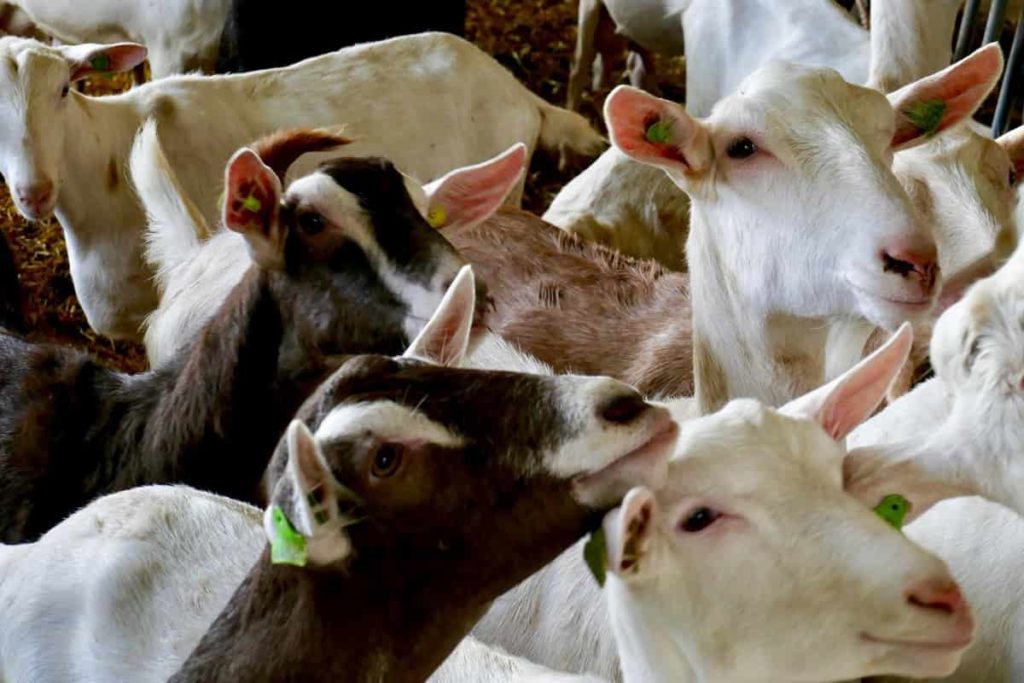
3. Feeding for goats
Being ruminants, Goats can feast on various plant life, including the popular corn. Goats need clean enough, open space to graze and eat to produce healthy milk. Ensure that the goats have plenty of room to graze and no restrictions on their movement. Utilizing a natural grazing system can help reduce the amount of money spent on goat feed.
4. Health and medication
Goats are susceptible to many diseases, and yours may be no exception. This means that you need to pay special attention to the cleanliness of your goat barn. A vet should be easily accessible in case of an emergency. Always keep your goats vaccinated and make sure you have an adequate supply of goat vaccines and related medications.
5. Vaccination for your goats
Make sure your goats get their vaccinations on schedule. Getting your goats vaccinated with CDT vaccination once a year is mandatory. Tetanus is part of the combined vaccine schedule (CVS). Give the vaccine to the babies when they’re 6-8 weeks old, and then give them another dose four weeks later. Afterward, vaccinate your goats yearly.
6. Maintaining your goats
The success of your goat farm depends on expert management. Maintaining order is essential while managing a goat farm. The first step toward better divisional structure and management is to split up the management team.
7. Initial investments
The first step in starting a goat farming business is deciding how much money and resources you can invest. It would be best if you had an idea of how much money you’ll need and how many goat-related facilities that money will buy you. We believe that if you put enough money into a goat farm, you will see a healthy return.
8. Creating a safe environment
It’s crucial to prioritize safety when raising goats. Try to make a place where your goats will be happy to live and grow. Protecting your goats from any potential dangers, including other animals and plants, would be best. Consider the following while designing a suitable fence facility: Construct a solid wall to enclose your farm. The fence’s height must be sufficient to accommodate your goats, allowing them to remain safely inside while preventing escape by predators. In most cases, a fence that is five feet or so in height is sufficient for the goats.
9. Providing an adequate shelter
Goats need a dry place to sleep at night and protection from the weather, such as rain and extreme cold. So, build your animals a proper place to live. Any barn or house should suffice as a goat habitat. Nonetheless, when constructing a shelter for your goats, you must ensure that it has adequate ventilation and is not subject to draughts. Straw works well as a bed for them. Goats do well on concrete floors because they are durable and easy to clean. The price, however, is high.
10. Grooming for goats
Goats can also be kept in good health through routine grooming. Regular goat grooming has many benefits, including improving the goats’ appearance and preventing the spread of common parasites. A good grooming routine typically involves a long soak in the tub and a good brushing. It is also crucial to maintain a regular hoof trimming schedule. If you can manage it, monthly goat hoof trimming is recommended. In terms of time and energy investment, trimming is rather cheap.
11. Keep the goats active
Provide some free time for your goats to go around and play. In general, goats enjoy a good climb. Therefore, you must support them in their climb. Please provide them with things that require them to climb. Goats are very smart and playful. They enjoy it very much when they can play. Allow them to have access to a free area where they can run around and play without interference.
In case you missed it: Common Sheep Diseases, Symptoms, and Treatment: Check How this Guide Helps Sheep Farmers
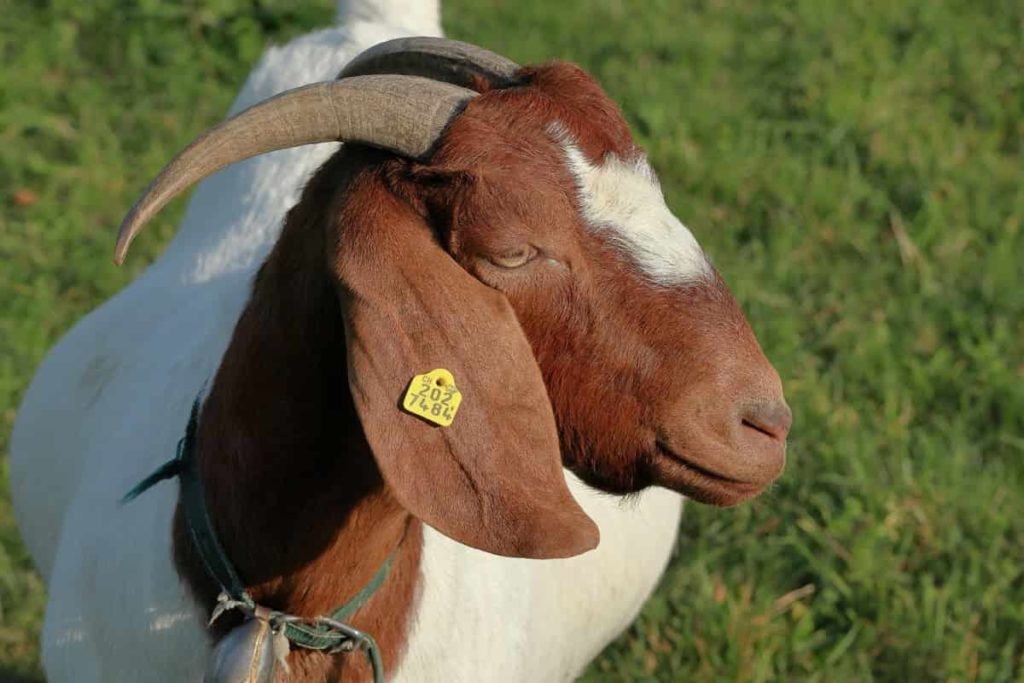
12. Deworm the goats
Most goats have significant issues with parasites, both those that live on the outside and the inside. Worms are one such example. Hence, it is important to deworm your goats routinely. Goats are frequently infected with hookworms, bloodworms, and coccidia. Depending on the conditions, parasites of this sort can produce a wide range of negative health outcomes, including infertility, malnourishment, and even death. So, it’s important to deworm regularly
13. Bloating problems
Goats can get bloated from eating too much fresh grass and vegetation. To put it bluntly, being bloated is quite risky. And if you don’t treat your goats in time, they’ll die.
14. Usage of goat manure as fertilizer
Goat manure is excellent compost for your garden. If you already keep goats, you know that they produce a lot of dung. Avoid wasting it. To make compost, toss it onto a pile with some plant matter. Your plant life will greatly benefit from the abundance of potassium, potash, and nitrogen. Goat manure is ideal for use as fertilizer since it is naturally produced in small pellets that are dry, easy to handle, and decompose quickly.
15. Select the goat breed based on its purpose
To accomplish your aim of milk, cheese, and other dairy products, you need to select a dairy goat breed according to several criteria. Although any goats could be slaughtered for their flesh, Boer and Kiko goats are particularly popular. Goats like the Angora, Pygora, and Cashmere varieties produce the luxurious wool used to make cashmere and angora.
16. Water and hay feeding
Feeders for both water and hay should also be taken into account. Consider purchasing heated watering buckets if you live in a climate with long, cold winters. It will save you the problem of always having to change the water, even if it is freezing outside. Due to health risks, moldy hay should never be fed to goats (particularly pregnant goats). Major health problems, including bloating and miscarriage, will result from this.
17. Dairy equipment or tools
Having dairy goats also requires specialized dairy equipment. Key equipment includes a milking stand for your goats. Putting together a milking stand is usually not difficult and can be done by the owner themselves. Most milking platforms will include a small feeder on one end and a place to tie your goat up so she won’t jump off while you milk her.
18. Consider expertise opinion
As a first step, you should peruse several internet goat-related resources. Active participation is encouraged. You should talk to goat owners about the breeds they’ve had success with, but you should always obtain multiple opinions because what works for one person might not work for you.
19. Behavioral issues of goats
Try to find goats that are fit and have no behavioral issues. If you have full-time work outside of farming, a goat that requires a lot of attention, expensive veterinary care, or regular upkeep is not a suitable choice. It would be best to consider your expenses when picking out goats.
20. Browse is better for goats
The leaves and shoots of woody trees and plants, known as “browse,” are a favorite food of goats because of their relatively high foraging habits. They also enjoy the taste of tree bark when chewed. Since they can pick up worm eggs and other parasites more easily when grazing close to the ground, it’s best if they eat high off the ground. However, goats will eat grass from the ground up if no browse is available.
In case you missed it: Understanding Backyard Poultry/Chicken Farming at Home: Check How this Guide Helps Beginners
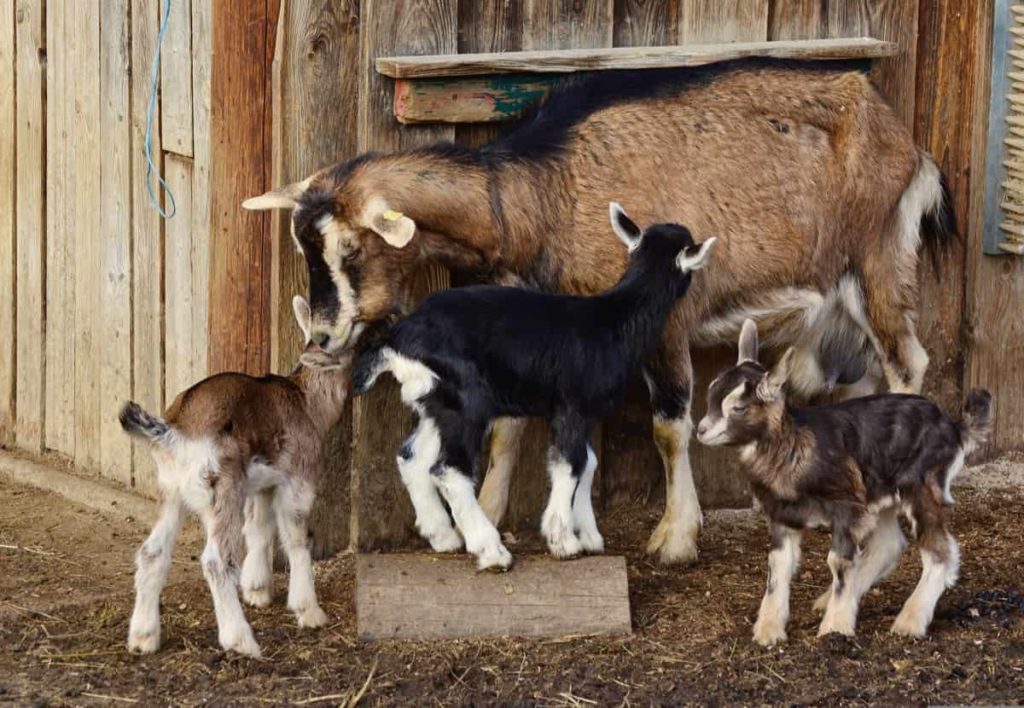
21. Feeding the grains
Goats often consume grain as their primary source of nutrition, and you can find this at any feed store. In the absence of sufficient forage, such as grass or browse, or if you want your goats to obtain more nutrition than they would from hay alone, grain is an easy and convenient option.
22. Mineral requirement
If you live in a region known to be weak in specific minerals, you should ensure sure mineral supplements are available to your goats. It may be necessary to supplement your goats’ diet with minerals to prevent certain diseases. Goats can eat loose minerals or chew on mineral blocks, both of which can be obtained at any feed store. Your goats will do just fine regulating their mineral intake as long as you provide access to the minerals.
23. Baking soda usage
Provide your goat herds with easy access to baking soda. They will consume it as required. It restores the normal pH in their rumen (digestive system), which might be thrown off if they consume an excessive amount of grain.
24. Unusual behavior of goats
Once you get to “know” your goats, you’ll have no trouble detecting any signs of illness. You should take appropriate steps, for instance, if your typically cheerful goat suddenly begins wandering with his head down and his tummy appears swollen. That sort of behavior may indicate bloat, a potentially fatal intestinal disorder in goats.
25. Worm load control
Do not delay in treating your goats for worms or other parasites if you notice any symptoms. Sticky, clumpy feces or diarrhea are symptoms. The typical goat takes a dump in dry, separate pellets that don’t clump. Since goats spend their lives and feed outdoors, parasites like worms are practically the norm.
The key is to maintain a manageable “worm load” for your goat. You can perform a fecal test on your goat to determine its worm load. If you want to keep the worm population in your goat herd under control, you’ll need to learn about worm management.
26. Check your goats’ eyelids
A barber pole worm is a sort of worm that can be fatal to your goats. When your goats start showing symptoms of illness from this worm, it’s usually too late to save them. Fortunately, problems with Barber Pole worms can be identified before they become severe. The goat becomes infested with worms that drain its blood. The membranes within a goat’s eyelids shift from a bright red to a very pale tone as the animal’s blood supply is cut and it becomes anemic.
27. Register your goats
Goats of a pure breed can have their lineage documented by “registering” them with a national goat organization. The babies of registered goats fetch a higher price than those of non-registered goats.
28. Milking your goats
The skill of milking goats is a specialized one. Getting good at milking takes practice. Feed your dairy goat some sweet snacks during practice time. They’ll be much more willing to cooperate when they see food on the milking stand. The number of times you have to milk your goats is based on the breed. You can milk certain goats multiple times a day, while others are only good for milking once.
In case you missed it: Common Fish Diseases, Symptoms, and Treatment: Check How this Guide Helps Fish Farmers
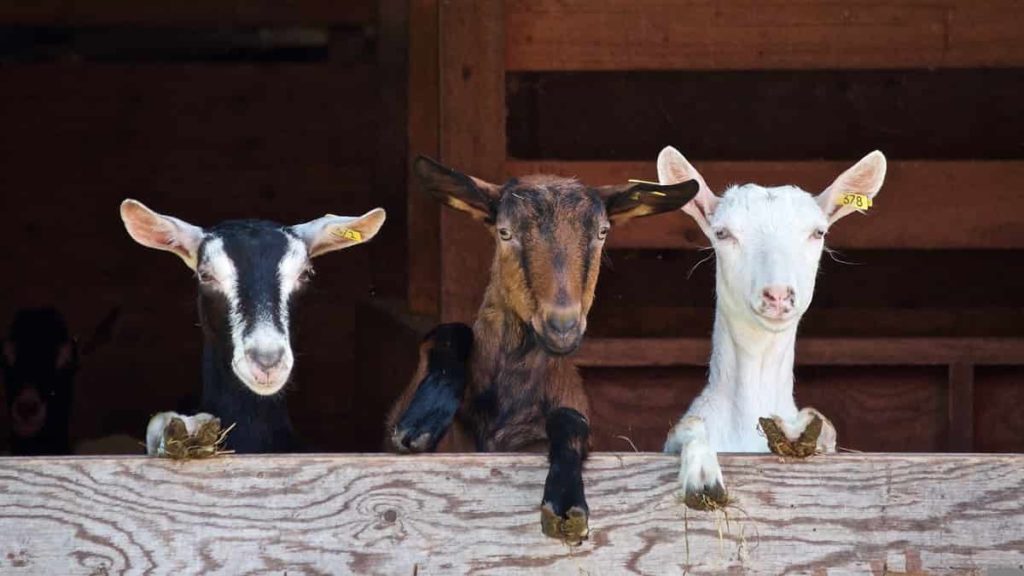
29. Goats’ Relative Age
Goat kids, roughly eight weeks old, are both affordable and easier to care for than their older ones. However, it takes roughly a year and a half to care for these young goats properly. After this time has passed, they can be used for breeding, meat, or milk production.
30. Newborn goats
A newborn baby’s nose and mouth must be wiped clean as soon as possible after birth to prevent infection. The mother must be allowed to lick them so as to build a mother-kid attachment and also for easier identification by the mother in the future. The child’s naval cord should be severed about 2.5 centimeters from the child’s midline. Tincture iodine or another similar antibiotic must be used to prevent infection and naval disease. It is important to use antiseptic lotion to thoroughly clean and disinfect the doe’s udders after giving birth.
31. Castration
Usually, male babies are prioritized when raising a herd due to their higher meat-quality potential. Most people would rather not have them in their breeding flock. As a result, they undergo castration when they are 1–2 months old.
32. Easy access to market
A market near the farming field will be preferable, as it will assist you in selling your products conveniently and buying necessary supplies.
33. Goats milk advantages
The term “foster mother of humans” is often applied to goats. For the simple reason that nutritionally speaking, goats produce the ideal milk for human consumption of any domestic animal. And their milk is low-priced, nutritious, wholesome, and easily digestible. Goat’s milk is quite gentle on the digestive system and can be consumed by people of all ages. There are fewer reports of goat milk causing allergic reactions. Also prescribed as Ayurvedic treatment for those suffering from conditions like diabetes, asthma, cough, etc.
34. Exporting goats’ meat
Goat milk is useful for creating numerous types of milk products. Goat meat is in high demand and fetches a premium price in both domestic and global markets. You, too, can increase your earnings by thinking about exporting things to other countries.
35. Marketing
The marketing of your goats is the most crucial and least difficult part of your business. Goat meat and milk are extremely popular and in high demand worldwide. Almost all types of individuals like goat milk and meat. That means there is a solid market in practically every part of the globe right now. Your local marketplace is a prime location for product sales. In the commercial sector, exports to foreign countries can be aimed at the international market.
36. Goat farming equipment
They also have unique equipment for milking, meat, fiber, or kids. Farm equipment: a goat feeder, a goat water trough, a pitchfork, a wheelbarrow, a clipper with serrated blades, and a milking stand.
In case you missed it: Top 50 Basic Gardening Tips for Beginners: That Every Gardener Should Know
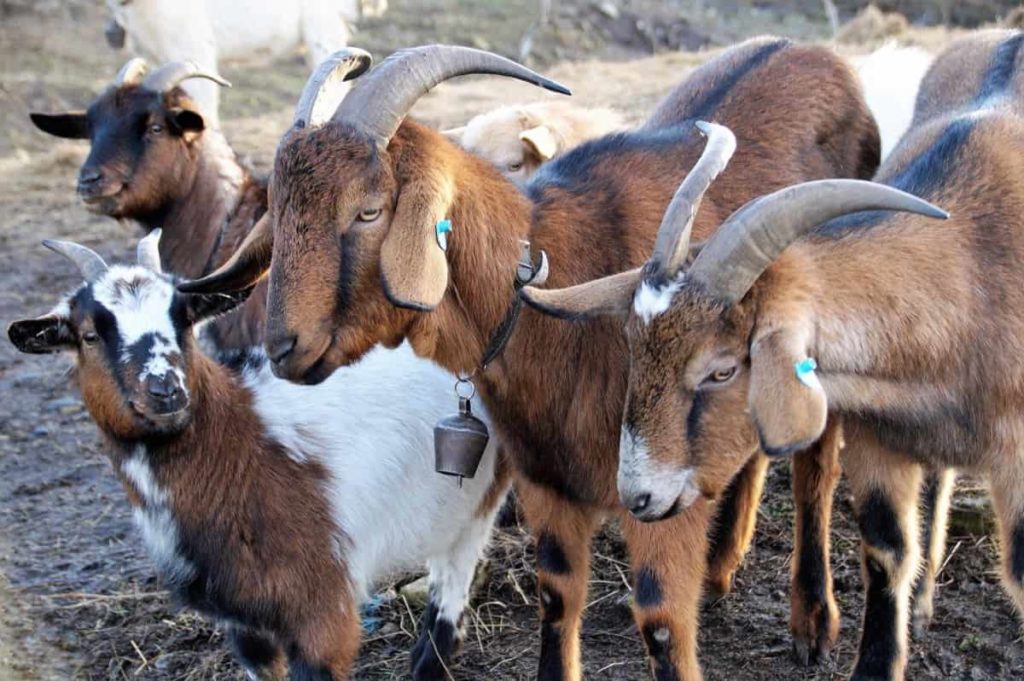
37. Returns in a short time
Since goats can have more than one kid at a time and three times in two years, they can bring in money quickly and with little investment. This is in contrast to raising other types of cattle.
38. Remove poisonous or strong-smelling plants
Goats are known to eat just about anything they can get their mouths on. Some goats may avoid eating dangerous plants like milkweed, bracken fern, or wild cherry leaves if they have access to a sufficient variety and quantity of non-poisonous alternatives. Plants like onion, cabbage, buttercup, and parsley that have a strong odor might taint the goat’s milk with an unpleasant flavor.
39. Remove the horn stubs
Most species of goats develop horns, which, if left unchecked, could cause serious harm to nearby animals or humans. You can “disbud” a kid goat as soon as you see the horn buds, but it’s best to do it after two weeks. For the goat, this can be uncomfortable, and it’s nearly impossible to do without some help. If you don’t know what you’re doing, it’s best to have a vet or goat farmer with experience help you out, especially if they’re familiar with giving goats anesthesia.
40. Keep the bucks and does separately
It’s not a good idea to have goats of drastically different sizes together unless the smaller goats are babies being raised by their mothers. Even if you don’t mind the occasional accidental pregnancy, keeping the buck in a separate enclosure is still a good idea because of the aggression it may display around the females during the rut.
Conclusion
Although goats can be used for a variety of purposes, the meat they provide is the most popular reason for keeping them. Goats are raised in various parts of the world for various products, including meat, milk, wool, and leather. The goat is the poor man’s cow because of its low cost. Goats can be bought up in a variety of climates; therefore, the industry is gaining popularity.
Although sheep and goats are members of distinct species, they require very comparable care. Sheep and goats are raised in nearly every region of the world. Goat farming is increasing in popularity as a commercial venture, as individuals of all social classes and cultural backgrounds like eating goat meat.
Due to the low cost of raising goats and their relatively modest feed and pasture requirements compared to other types of livestock, the industry as a whole requires relatively little initial investment. If the need ever arises, the farmer can easily and cheaply construct a shed and sell the goats to cover the costs. Therefore, the business of raising goats is seeing expansion at the present time.
- Management Pests and Diseases in Your Cotton Field
- Sheep Farming Business Plan for Beginners
- Aquaponic Farming at Home: A Step-By-Step Guide
- Profitable Village Farming Business Ideas in 2024
- High-Yield Aquaculture: Fast-Growing Fish for Farming
- Effective Fish Pond Construction Techniques for Beginners
- Irrigation and Water Management in Pineapple Farming
- Blossom to Harvest: Mastering Flowering and Pollination in Papaya Farming
- Pig Fattening Essentials: From Selection to Sale for Beginners
- Raising Wagyu Cattle: A Complete Guide for Premium Beef Production
- Soil Types and Their Water Holding Capacity
- Optimizing Irrigation Schedules for Coconut Groves for Enhanced Yield
- Espresso Your Garden: Coffee Grounds for Healthier Acid-Loving Plants
- The Best Soil Mix for Snake Plants: How to Mix Your Own Snake Plant Soil
- Green Thumb Success: Expert Tips for Cultivating Greenhouse Beans All Year Round
- Bloom All Year Round: The Ultimate Guide to Indoor Hyacinth Care
- Eco-Friendly Gardening: How to Make Liquid Fertilizer from Kitchen Waste
- Ultimate Guide to Grow Anise in Pots: Explore Seed Propagation to Harvesting
- Guide to Raising Chester White Pigs: Discover Breed Facts to Growth Management
- Mastering the Elegance: The Ultimate Guide to Weeping Cherry Tree Care, Planting, and Maintenance
- Ultimate Guide to Planting Garlic in Grow Bags: Growing Strategies for Beginners
- How to Fix Spider Plant Leaf-Related Problems: Natural and Organic Remedies
- 10 Reasons Why Your Tulsi Plant is Shedding Leaves: Home Remedies and Solutions
- Optimizing Growth and Yield: The Advantages of Palm Bunch Ash Fertilizer
- Utilizing Neem Oil Extract as a Natural Pesticide for Hydrangea
- From Soil to Harvest: Various Ways in Which Farmers Can Use AI Tools
- Steps to Encourage and Induce Citrus Flowers: A Comprehensive Guide
- How to Fix Snake Plant Leaf-Related Issues: Natural and Organic Remedies
- Transform Your Garden into a Fragrant Oasis with Raat Ki Rani (Night Blooming Jasmine)
- Discover the Ideal Chicken Breeds for Philippine Farms
- How to Create a Poultry Egg Farm Business Plan for Profits
- Grow Lemon Cucumbers Like a Pro: Insider Techniques for Bountiful Yields
- Ultimate Guide to Caring for Your Pink Princess Philodendron: Tips for Thriving Variegation
- Areca Nut Profit Per Acre: Calculating Yield and Cost of Cultivation
- How Kaveri Chicken is Becoming a More Profitable Breed in Indian Backyards
- Transform Your Barn: 9 Steps to Convert a Horse Stall into a Chicken Coop
